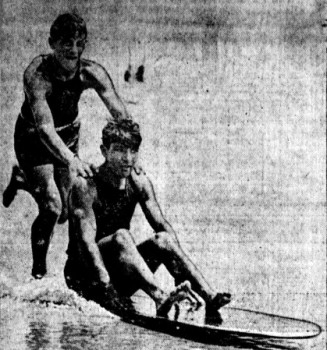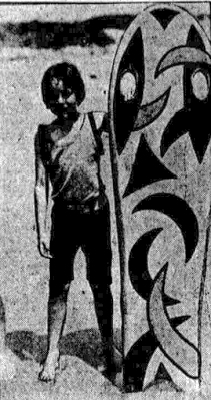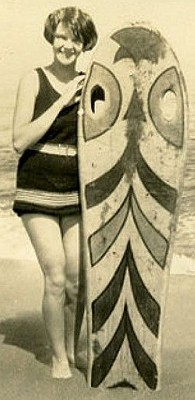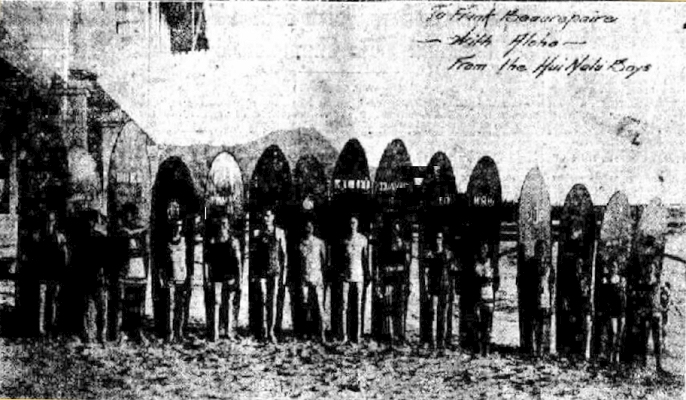
surfresearch.com.au
newspapers : 1921
newspapers : 1921
| home | catalogue | history | references | appendix |
 |
surfresearch.com.au
newspapers : 1921 |
|
|
|
|
|
| 9 January
1921 12 February 1921 26 February 1921 13 June 1921 15 June 1921 28 June 1921 16 July 1921 26 July 1921 6 September 1921 6 September 1921 9 September 1921
14 September 1921 24 October 1921 11 December 1921 |
Claude West
Injured in Rescue, Manly. Newcastle Carnival. Claude West Surfboard Rescue, Manly. Lifeguards and Surfboard, Atlantic City, with photograph. Beach Report and Surfboard Restrictions, Atlantic City, with illustration. Balsa Surfboards from Rogers Peet Company, at four stores in New York City. Surfboards rented at 15 cents, tidal basin bathing beach, Washington, DC. Boston's Helen Smith with her New Surfboard, with photograph. Girl Reserves Camp, Kauai. Surfboard Restrictions, Waikiki. Duke Sculpture, for the New York Museum of Natural History. Hawaii, Duke, and Surfboards by Frank Beaurepaire, Australia, with autographed photograph.. Duke, Surfboards and Swimming by L.G. Robinson, Henley and Orange Club, Adelaide Surf Riding Women, Washington DC - Harvard University? |
| Evening
Public Ledger. Philadelphia, June 13, 1921, page 28. WONDERFUL SPORT.
Frank Baxter, furnished the power as Joe Marks enjoyed a ride on the surf board, at Atlantic City, yesterday afternoon. These boys felt no effects of the heat wave. -Ledger Photo
service.
Chronicling America Evening public ledger. (Philadelphia [Pa.]) 1914-1942, June 13, 1921, NIGHT EXTRA, Image 28 Image and text provided by Penn State University Libraries; University Park, PA Persistent link: http://chroniclingamerica.loc.gov/lccn/sn83045211/1921-06-13/ed-1/seq-28/ |
 |
| Evening
Public Ledger. Philadelphia, July 26, 1921, page 24. "FLOATING FISH" That's the name of the new surfboard. The owner is Helen Smith, of Boston. Central News Photo Evening public ledger. (Philadelphia [Pa.]) 1914-1942, July 26, 1921, NIGHT EXTRA, Image 24 Image and text provided by Penn State University Libraries; University Park, PA Persistent link: http://chroniclingamerica.loc.gov/lccn/sn83045211/1921-07-26/ed-1/seq-24/ Note: The intricate decor and Fish tail (45 years before Bear Mirandon-Steve Lis) with side-cut template (70 years before Meyerhoffer). Far Left:
Another young girl with a balsa wood surfboard. |
 |
 |

|
|
|
|
|

| home | catalogue | history | references | appendix |